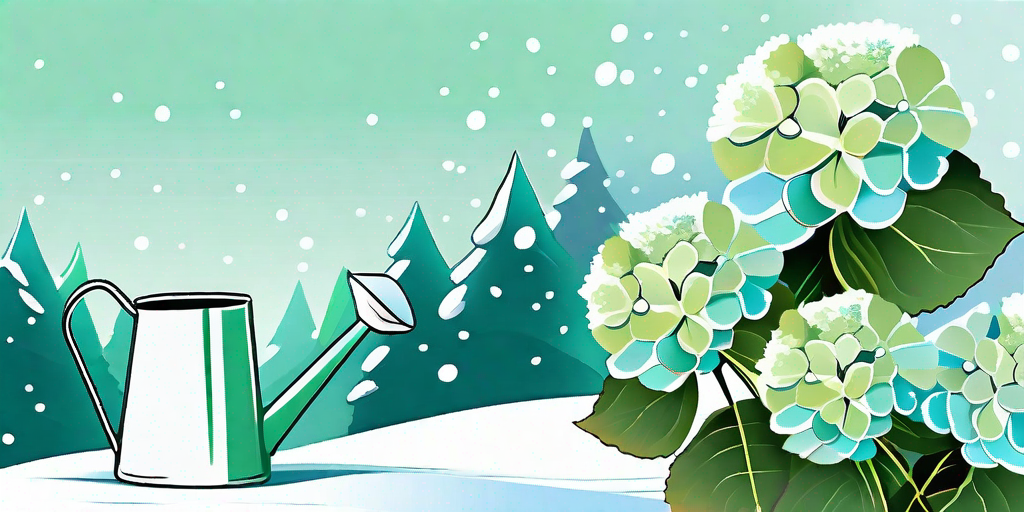
Ah, hydrangeas. Those beautiful, billowing blooms that grace gardens with their presence and charm. They're the divas of the plant world, demanding attention and care, but rewarding us with a spectacular show. But when winter comes, these divas can turn into drama queens. Fear not, dear reader, for we are here to unravel the truth about hydrangeas and how to keep them alive during the chilly season.
The Hydrangea: A Brief Introduction
Before we dive into the nitty-gritty of winter care, let's get to know our subject a bit better. The hydrangea, or Hydrangea macrophylla if you're feeling fancy, is a species of flowering plant native to Japan. They're known for their large, round flower heads that come in a variety of colors, from pink to blue to white.
Hydrangeas are deciduous shrubs, meaning they lose their leaves in the fall. This is when they start to look a bit sad and you might start to panic. But don't worry, this is all part of their natural cycle. They're not dying, they're just taking a nap.
Understanding Winter's Impact on Hydrangeas
Now, let's talk about winter. It's a tough time for all of us, but especially for our hydrangea friends. The cold temperatures and harsh conditions can cause damage to the plant, leading to a lackluster bloom the following spring.
But why does this happen? Well, hydrangeas are a bit like Goldilocks. They don't like it too hot, and they certainly don't like it too cold. They prefer a mild, temperate climate. When winter comes along, it's like a rude houseguest who overstays their welcome.
The Cold
The cold can cause the plant's roots to freeze, which can lead to the plant's death. It's a bit like if you were to go outside without a coat in the middle of winter. You'd probably get a bit chilly, right? Well, the same goes for hydrangeas.
But it's not just the cold that's the problem. It's also the wind. The wind can cause the plant to lose moisture, leading to dehydration. It's like being in a desert, but a really, really cold one.
The Snow
And then there's the snow. While it might look pretty, it can be a real pain for hydrangeas. The weight of the snow can cause the branches to break, damaging the plant. It's like if someone were to dump a bucket of snow on you. You'd probably be a bit miffed, right? Well, so are hydrangeas.
But fear not, dear reader. While winter might seem like a formidable foe, there are ways to protect your hydrangeas and ensure they survive the season.
Keeping Your Hydrangeas Alive: A Step-by-Step Guide
Now, let's get down to business. How do you keep your hydrangeas alive during winter? Well, it's not as difficult as you might think. Here's a step-by-step guide.
- Watering: Before the first frost, give your hydrangeas a good watering. This will help to prevent dehydration.
- Mulching: Apply a thick layer of mulch around the base of the plant. This will help to insulate the roots and protect them from the cold.
- Wrapping: Wrap the plant in burlap to protect it from the wind and snow. It's like giving your hydrangeas a cozy winter coat.
- Pruning: Wait until spring to prune your hydrangeas. Pruning in the fall or winter can expose the plant to the cold and cause damage.
By following these steps, you can help your hydrangeas survive the winter and bloom beautifully in the spring.
FAQs
Do all hydrangeas need winter protection?
Not all hydrangeas need winter protection. Some varieties are more cold-hardy than others. It's best to research the specific needs of your variety to ensure proper care.
Can hydrangeas survive a freeze?
Yes, hydrangeas can survive a freeze, but it can cause damage to the plant. It's best to protect your hydrangeas from freezing temperatures if possible.
What happens if I don't protect my hydrangeas in winter?
If you don't protect your hydrangeas in winter, they may suffer from cold damage. This can lead to a lackluster bloom in the spring, or in severe cases, the death of the plant.
In Conclusion
Winter can be a tough time for hydrangeas, but with a little bit of care and attention, you can help them survive the season. Remember, hydrangeas are like divas. They demand a bit of pampering, but the rewards are worth it. So don your gardening gloves, grab your mulch, and show your hydrangeas some love this winter.
And remember, when spring comes and your hydrangeas are blooming beautifully, you can sit back, sip your tea, and say, "I did that." Now, isn't that a lovely thought?















